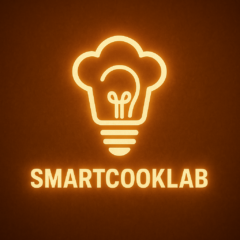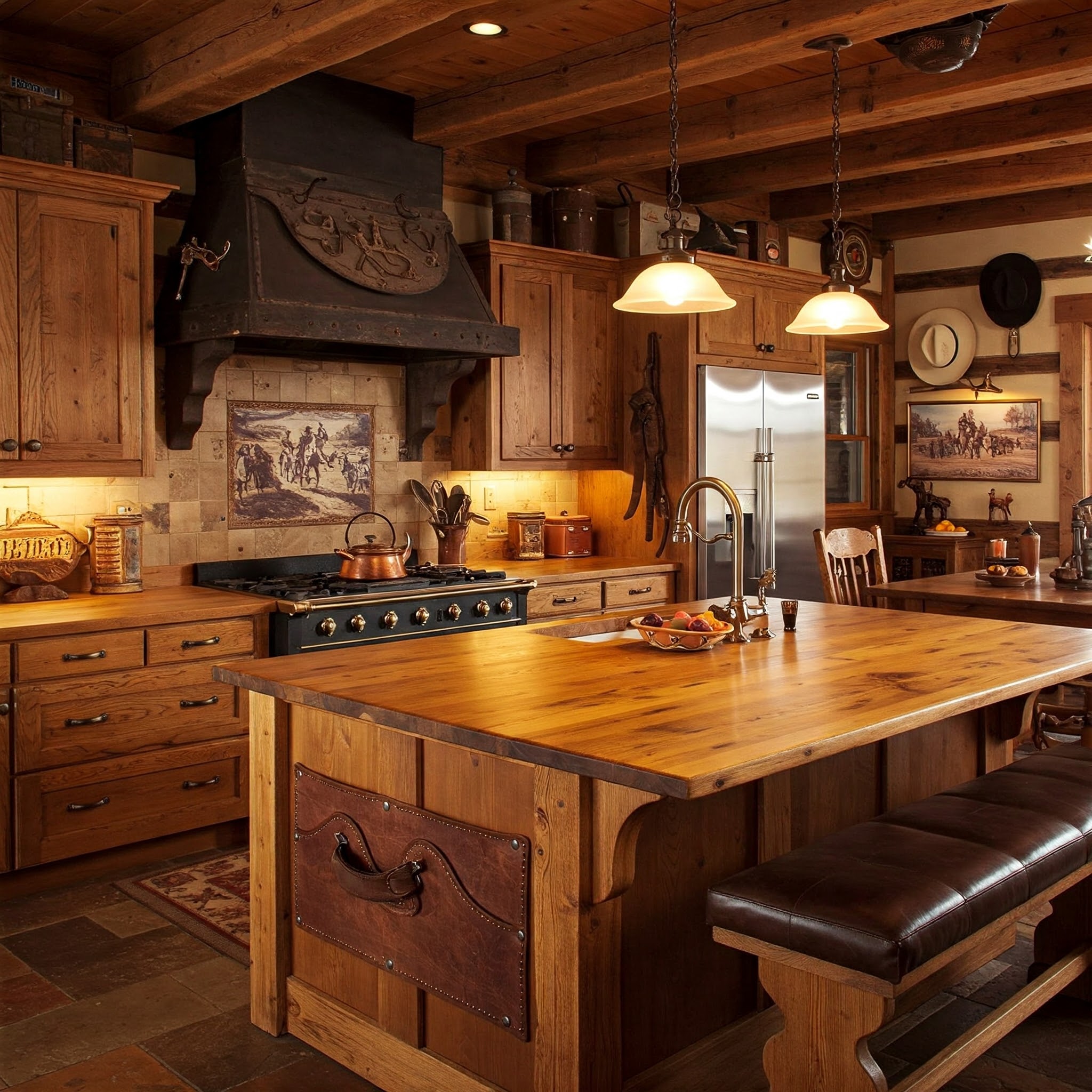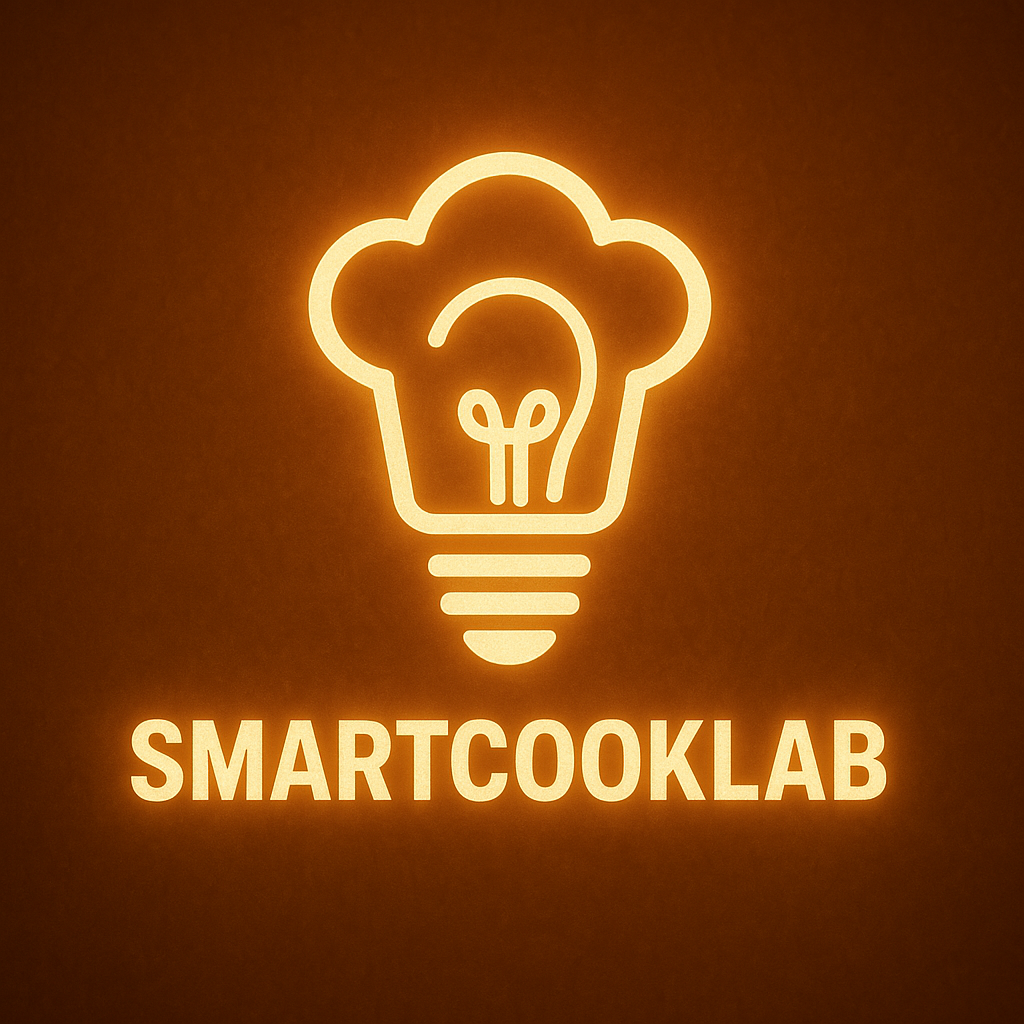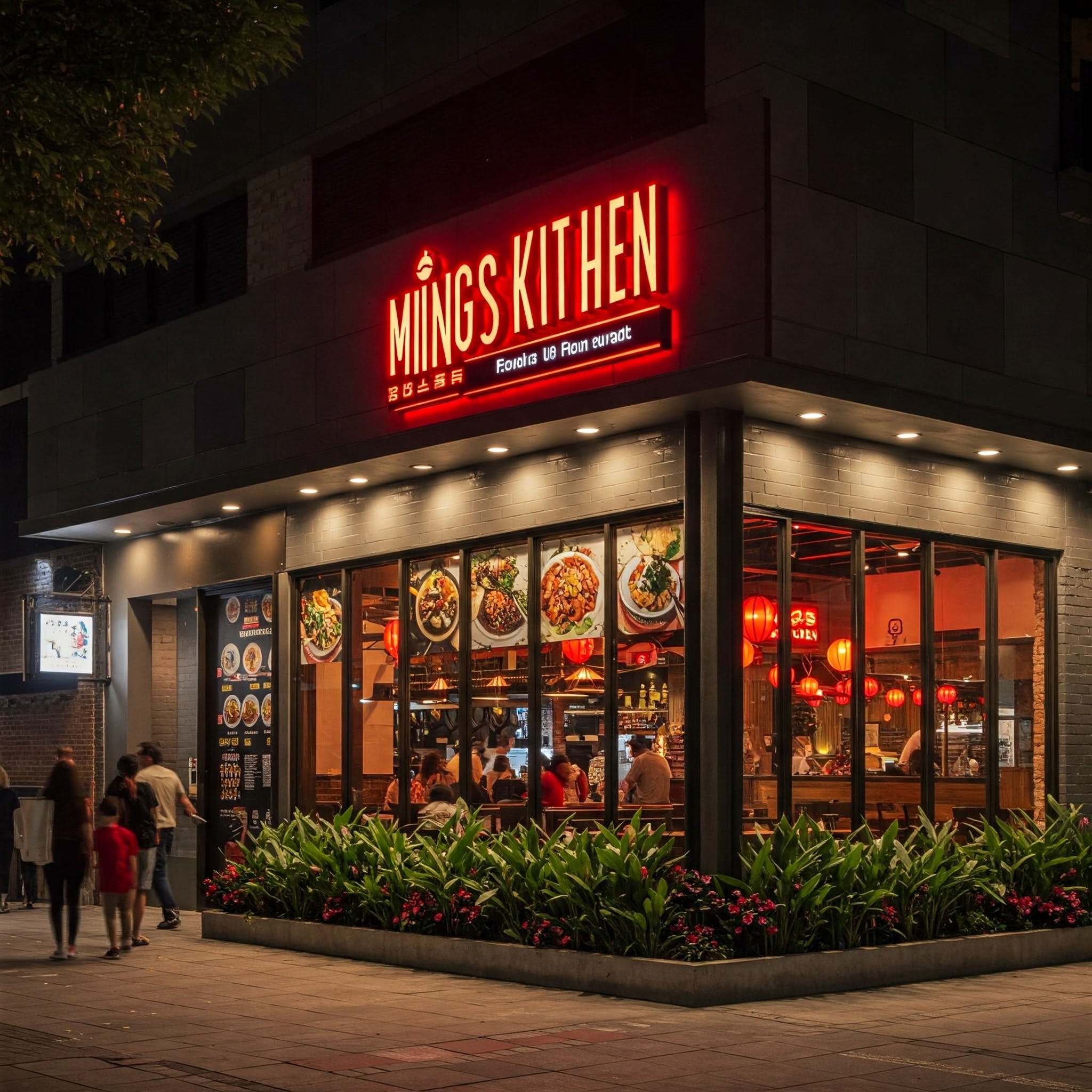Rediscovering the Rugged Charm of Cowboy Kitchen
There’s something undeniably appealing about the rustic, hearty approach of a cowboy kitchen that continues to captivate modern home cooks. I’ve always been fascinated by the ingenious ways cowboys prepared delicious, satisfying meals with limited resources and simple techniques. This quintessentially American cooking style emerged from necessity on cattle drives and ranches across the western frontier, where hearty, filling meals needed to be prepared in often challenging conditions.
Today, the cowboy kitchen approach offers a refreshing alternative to complicated, gadget-dependent cooking methods. It reconnects us with our culinary heritage while providing practical, flavor-focused techniques that anyone can master. Whether you’re an experienced home chef looking to expand your repertoire or simply drawn to the authentic, no-nonsense approach of western cooking, embracing cowboy kitchen methods will transform your home cooking experience.
In this comprehensive guide, we’ll explore everything from essential cowboy kitchen equipment and traditional cooking methods to authentic recipes and modern adaptations. You’ll discover how to incorporate these time-tested techniques into your everyday cooking routine, bringing the spirit of the western frontier right into your twenty-first-century kitchen.
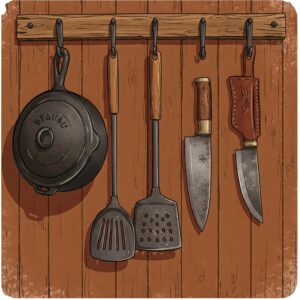
What Exactly Is a Cowboy Kitchen? Understanding the Basics
A cowboy kitchen isn’t just about cooking western-style foods—it represents an entire philosophy of meal preparation that developed on the American frontier. During the late 19th century, cattle drives required cooks to prepare hearty meals for hungry cowboys working long days in harsh conditions. These mobile kitchens, often centered around chuck wagons, relied on simple equipment, locally available ingredients, and ingenious cooking methods.
The defining characteristics of a traditional cowboy kitchen include:
✅ Simplicity in equipment and techniques
✅ Emphasis on hearty, sustaining meals
✅ Resourceful use of available ingredients
✅ Cooking with open fire or cast iron
✅ Minimal waste and maximum flavor
✅ Focus on preservation methods
✅ Community-centered dining experience
According to the National Cowboy & Western Heritage Museum, the chuck wagon—invented by Texas rancher Charles Goodnight in 1866—became the centerpiece of cowboy cooking culture. This mobile kitchen carried essential provisions and equipment, allowing cooks (often called “cookie” or “chef”) to prepare meals anywhere on the trail.
Today, recreating a cowboy kitchen at home doesn’t mean you need to cook exclusively outdoors over an open flame (though that’s certainly an authentic option!). Instead, it’s about adopting the principles, techniques, and spirit of this distinctive American cooking tradition while adapting it to contemporary settings.
Essential Equipment for Your Modern Cowboy Kitchen
Creating an authentic cowboy kitchen experience starts with the right equipment. While modern conveniences have their place, the core tools remain remarkably similar to what chuck wagon cooks relied on more than a century ago. Here are the essential items you’ll need:
1. Cast Iron Cookware: The Cornerstone of Cowboy Cooking
Nothing symbolizes cowboy kitchen cooking more than well-seasoned cast iron. These versatile, durable pieces distribute heat evenly and develop a natural non-stick surface over time.
Key cast iron pieces include:
- Cast iron skillet – The workhorse of the cowboy kitchen, perfect for everything from cornbread to steaks
- Dutch oven – Essential for stews, beans, and even baking bread
- Griddle – Ideal for pancakes, tortillas, and grilling sandwiches
For those looking to invest in quality cast iron, the Lodge Pre-Seasoned Cast Iron 5-Piece Set offers exceptional value with multiple essential pieces that will last generations. This comprehensive set includes a skillet, Dutch oven, and griddle—everything you need to begin your cowboy kitchen journey.
2. Open Fire Cooking Equipment
Authentic cowboy cooking often happened over open flames, and you can recreate this experience with:
- Tripod grill – Suspends pots over an open fire
- Fire grate – Provides a stable cooking surface over flames
- Long-handled tools – Keeps your hands safe from the heat
For backyard cooking enthusiasts, the Texsport Heavy Duty Over Fire Camp Grill provides a sturdy platform for authentic open-fire cowboy cooking.
3. Cutting and Preparation Tools
Simple, durable tools for food preparation remain essential:
- Quality knife – A good fixed-blade knife served multiple purposes
- Cutting board – Preferably wood, as cowboys would have used
- Hand grinder – For processing coffee beans, corn, or other grains
4. Storage and Preservation Equipment
Cowboys needed efficient ways to store food on long journeys:
- Mason jars – For preserving fruits, vegetables, and more
- Crocks – Used for fermenting and pickling
- Canvas bags – For storing dry goods like flour and beans
According to a study published in the Journal of American History, food preservation techniques were critical to survival on the frontier, with many methods still relevant for modern home cooks interested in sustainability and self-sufficiency.

Traditional Cowboy Kitchen Cooking Methods
The heart of cowboy kitchen cooking lies in its distinctive methods, developed through necessity and perfected through generations of practice. These techniques create unique flavors that simply can’t be replicated with modern shortcuts.
1. Dutch Oven Cooking: The Original One-Pot Wonder
Perhaps the most versatile method in the cowboy kitchen arsenal is Dutch oven cooking. These heavy cast iron pots with tight-fitting lids allowed trail cooks to prepare everything from stews to biscuits.
Key Dutch oven techniques include:
✅ Banking coals – Placing hot coals both underneath and on top of the Dutch oven creates an oven-like environment
✅ Temperature control – Adding or removing coals adjusts the cooking temperature with surprising precision
✅ Hanging methods – Suspending the Dutch oven over flames using a tripod for specific dishes
The Lodge Deep Camp Dutch Oven represents an excellent investment for those serious about authentic cowboy cooking. Its legs allow it to stand over coals, while the flanged lid holds coals on top for even heating—exactly as cowboys would have used it.
2. Open Fire Grilling and Roasting
Direct cooking over open flames imparts distinctive smoky flavors that modern methods simply can’t match. Cowboys became experts at controlling fire for different cooking purposes.
Traditional open fire techniques include:
- Spit roasting – Rotating meat slowly over flames for even cooking
- Plank cooking – Using soaked wood planks to impart subtle flavors
- Coal cooking – Placing food directly on or wrapped within hot coals
As noted by researchers at the University of Wyoming’s American Heritage Center, these methods weren’t just practical but also developed unique regional flavor profiles across the American West.
3. Cast Iron Skillet Techniques
The versatile skillet served countless purposes in the cowboy kitchen, from frying to baking. Learning these techniques can transform your cooking:
✅ Shallow frying – Perfect for chicken, steaks, and other proteins
✅ Pan bread – Creating cornbread, biscuits, and other quick breads
✅ One-skillet meals – Combining proteins, vegetables, and starches for complete meals
4. Slow Simmering and Boiling
Many cowboy staples relied on long, slow cooking methods that developed deep flavors while tenderizing tough cuts of meat:
- Bean pots – Keeping beans at a low simmer for hours developed rich, flavorful results
- Bone broths – Extracting maximum nutrition and flavor from bones and scraps
- Coffee brewing – The distinctive “cowboy coffee” method using a pot and grounds
Authentic Cowboy Kitchen Recipes for Modern Home Cooks
Let’s explore some classic cowboy kitchen recipes that have stood the test of time, with adaptations that make them accessible for today’s home cooks.
Classic Cowboy Beans
This staple provided protein and energy during long days on the trail and remains a delicious, economical dish today.
Ingredients:
- 2 lbs pinto beans, soaked overnight
- 1 large onion, diced
- 4 cloves garlic, minced
- 1/2 lb salt pork or bacon, diced
- 2 tablespoons molasses
- 1 tablespoon mustard powder
- 1 teaspoon dried oregano
- Salt and pepper to taste
- 8 cups water or stock
Method:
- In a Dutch oven, brown the salt pork until crispy
- Add onions and garlic, sautéing until translucent
- Add beans, water, and remaining ingredients
- Simmer for 3-4 hours, adding water as needed
- Season to taste before serving
For an authentic experience, the Lodge 6-Quart Enameled Cast Iron Dutch Oven provides the perfect vessel for these slow-cooked beans, combining traditional cooking benefits with easier maintenance.
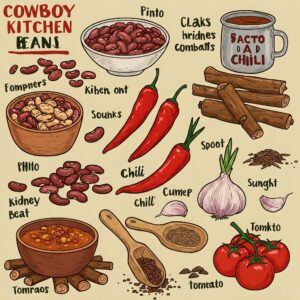
Sourdough Biscuits
Cowboys valued bread that could be made without refrigerated ingredients—making sourdough a perfect trail food.
Ingredients:
- 2 cups active sourdough starter
- 3 cups all-purpose flour
- 1/4 cup lard or butter
- 1 teaspoon salt
- 1 teaspoon baking powder
- 1/2 teaspoon baking soda
- Milk as needed
Method:
- Mix dry ingredients in a large bowl
- Cut in lard until mixture resembles coarse crumbs
- Add sourdough starter and mix just until combined
- Turn onto floured surface, pat to 1-inch thickness
- Cut into rounds and place in greased skillet
- Bake in Dutch oven with coals above and below for 15-20 minutes
Authentic Chuck Wagon Stew
This hearty one-pot meal sustained cowboys through long days and cold nights.
Ingredients:
- 2 lbs beef chuck, cut into cubes
- 2 tablespoons flour
- 2 tablespoons fat (tallow, lard, or oil)
- 2 onions, roughly chopped
- 3 carrots, cut into chunks
- 2 potatoes, cubed
- 1 cup dried or fresh seasonal vegetables
- 2 tablespoons vinegar
- 4 cups beef stock
- Salt, pepper, and herbs to taste
Method:
- Toss beef with flour, salt, and pepper
- Heat fat in Dutch oven and brown meat in batches
- Add onions and cook until softened
- Return all meat to pot, add remaining ingredients
- Simmer for 2-3 hours until meat is tender
According to culinary historians at the Foodways Texas organization, these one-pot meals varied widely depending on available ingredients but always focused on creating maximum flavor from simple components.
🔥 Saddle Up and Transform Your Kitchen Experience! 🔥
➡ Ready to bring authentic western flavors to your home? The Lodge Cast Iron Cookware Collection offers everything you need to start your cowboy kitchen journey. These heritage-quality pieces will last for generations while helping you create memorable meals your family will love. Check out these essential pieces today!
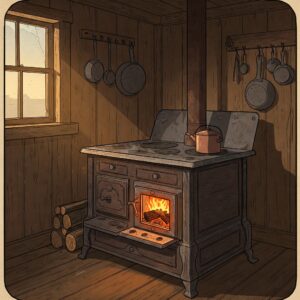
Modern Adaptations: Bringing Cowboy Kitchen to the 21st Century
While traditional methods create authentic results, we can adapt cowboy kitchen techniques to fit modern lifestyles without sacrificing flavor or spirit.
Indoor Alternatives to Open Fire Cooking
Not everyone has access to outdoor cooking spaces, but you can still achieve similar results:
✅ Broiler method – Using your oven’s broiler can mimic the direct heat of open flames
✅ Cast iron on high heat – Properly heated cast iron creates excellent searing similar to fire cooking
✅ Smoking indoors – Small indoor smokers can add authentic flavors without an outdoor setup
The Lodge Cast Iron Grill Pan provides excellent grill marks and flavor while working on any stovetop, making it perfect for apartment dwellers wanting cowboy kitchen results.
Time-Saving Adaptations
While cowboys had all day to tend their pots, modern cooks can use some shortcuts:
- Pressure cookers – Achieve tender results with beans and tough cuts in a fraction of the time
- Slow cookers – Set and forget for all-day simmering without monitoring
- Par-cooked ingredients – Using canned beans or pre-cooked elements speeds up authentic recipes
Ingredient Substitutions and Enhancements
Today’s cooks have access to ingredients that would have been luxuries on the trail:
- Fresh herbs – Enhance traditional recipes with freshly chopped herbs
- Specialty meats – Experiment with game meats for authentic frontier flavors
- International influences – Incorporate techniques from Mexican vaquero tradition and other culinary influences
The Environmental Benefits of Cowboy Kitchen Cooking
Interestingly, many cowboy kitchen principles align perfectly with modern sustainability concerns. By adopting these methods, you’re not just cooking delicious food—you’re embracing environmentally responsible practices.
Reduced Energy Consumption
Traditional cowboy cooking methods often require less energy than modern appliances:
- Wood-fired cooking uses renewable resources
- Slow cooking methods maximize fuel efficiency
- One-pot meals reduce overall energy usage
Research from the American Council for an Energy-Efficient Economy suggests that traditional cooking methods often consume significantly less energy than modern electric appliances when used properly.
Minimal Food Waste
Cowboys couldn’t afford to waste anything, developing techniques to use every part of ingredients:
✅ Nose-to-tail cooking utilized entire animals
✅ Preservation methods extended food usability
✅ Leftover repurposing created new meals from remains
Sustainable Cookware
Cast iron and other traditional cowboy kitchen equipment offer environmental benefits:
- Exceptional durability means less frequent replacement
- Production requires fewer chemicals than non-stick alternatives
- Often made from recycled materials
- Can be recycled at end of life
The Social Aspect: Cowboy Kitchen as Community Building
Beyond techniques and equipment, cowboy kitchen cooking embodies a social philosophy that’s increasingly relevant in our disconnected world.
Communal Dining Experiences
The chuck wagon wasn’t just about food—it was the social center of cowboy life:
- Meals were served and eaten together, building camaraderie
- Cooking was often visible, creating anticipation and appreciation
- Stories and experiences were shared around the cooking fire
According to sociologists at the Rural Sociological Society, these communal eating practices created stronger social bonds and hierarchies that helped maintain order in challenging environments.
Teaching Traditional Skills
Cowboy kitchen techniques provide excellent opportunities to pass knowledge between generations:
- Children can safely learn basic cooking principles
- Stories of western history come alive through food
- Practical skills build confidence and self-reliance
Essential Ingredients for an Authentic Cowboy Kitchen Pantry
Stocking your pantry with the right ingredients forms the foundation of successful cowboy kitchen cooking. These shelf-stable, versatile items would have been staples in any chuck wagon.
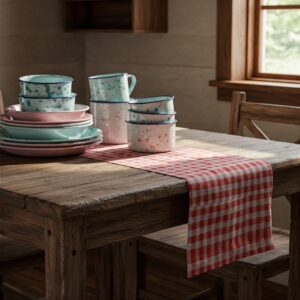
Dry Goods
The backbone of cowboy nutrition came from shelf-stable items:
- Beans – Pinto, navy, and red beans provided protein
- Flour – For biscuits, gravy, and thickening
- Cornmeal – Used for cornbread and as a coating
- Coffee – The essential morning starter
- Salt – Critical for preservation and flavor
- Sugar and molasses – Limited sweeteners for special occasions
Preserved Items
Without refrigeration, preservation was essential:
✅ Salt pork – Provided fat and flavor for beans and other dishes
✅ Dried fruit – Added sweetness and nutrients when fresh wasn’t available
✅ Cured meats – Jerky and other preserved proteins lasted for months
✅ Pickled vegetables – Provided needed vitamins and flavor variety
Seasonings
Simple but effective flavorings enhanced basic ingredients:
- Pepper – Often the only spice besides salt
- Dried herbs – Whatever could be gathered or stored
- Vinegar – Added brightness and aided preservation
- Hot sauce – Regional variations added heat and interest
For modern cooks seeking authentic flavors, the Cowboy Kent Rollins Chuck Wagon Seasoning offers a historically-inspired blend perfect for traditional recipes.
🤠 Elevate Your Cooking With Authentic Tools! 🤠
➡ The right equipment makes all the difference in creating true cowboy kitchen flavors. From Dutch ovens to skillets, investing in quality cast iron will transform your cooking for years to come. Click on any highlighted product to check current pricing and availability. Your taste buds will thank you!
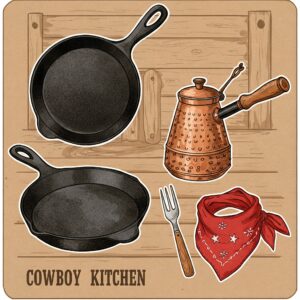
Famous Chuck Wagon Cooks and Their Contributions
The development of cowboy kitchen techniques wasn’t random—it came through the innovations of talented cooks who solved problems and created traditions.
Historical Figures
Several notable chuck wagon cooks have been documented in western history:
- James H. Campbell – Considered one of the first professional chuck wagon cooks who established standards for trail cooking
- Charles Goodnight – While known as a rancher, his chuck wagon design revolutionized mobile cooking
- Gus “Cookie” Brooks – Legendary for his sourdough biscuits that remained famous throughout the western territories
The Cattle Raisers Museum in Fort Worth, Texas maintains records of these culinary pioneers who shaped western food culture.
Modern Interpreters
Today’s chefs and historians keep cowboy kitchen traditions alive:
- Kent Rollins – Modern chuck wagon cook who demonstrates traditional techniques
- Ash Christensen – Western cooking historian documenting traditional methods
- Paula Disbrowe – Food writer specializing in modern cowboy cuisine
Seasonal Cooking in the Cowboy Kitchen Tradition
Cowboys adapted their cooking to seasonal availability, a practice that remains relevant for modern home cooks seeking fresher, more sustainable ingredients.
Spring and Summer Cooking
Warmer months allowed for more variety:
✅ Fresh herbs and wild greens complemented standard fare
✅ Game and fish added protein variety
✅ Rapid cooking methods prevented overheating the camp
✅ Preservation activities prepared for leaner months
Fall and Winter Approaches
Cold weather called for different techniques:
- Hearty stews provided warming, filling meals
- Longer cooking times utilized heat for comfort
- Preserved items from summer sustained through winter
- Bread baking became more frequent for added calories
Regional Variations of Cowboy Kitchen Cooking
While cowboy cooking shared common principles, distinct regional styles emerged based on available ingredients and cultural influences.
Southwestern Cowboy Cuisine
Heavily influenced by Mexican vaquero traditions:
- Liberal use of chiles and cumin
- Incorporation of corn tortillas alongside biscuits
- Techniques like pit cooking for special occasions
Northern Plains Style
Adapted to colder conditions and different resources:
✅ Greater emphasis on preserved game meats
✅ Wild berries and foraged ingredients
✅ Influences from Native American cooking methods
✅ Heartier, higher-calorie dishes for extreme conditions
Texas Chuck Wagon Traditions
Perhaps the most codified of cowboy cooking styles:
- Emphasis on beef-forward dishes
- Distinctive bread-making techniques
- Specific bean preparation methods
- Standardized equipment arrangements
According to the Texas State Historical Association, these regional variations reflected not just ingredient availability but cultural mixing that created distinct American culinary identities.
Cowboy Kitchen for Special Diets
Traditional cowboy cooking can be adapted for modern dietary requirements without losing its essential character.
Vegetarian Adaptations
Though historically meat-centric, many cowboy kitchen techniques work beautifully for plant-based cooking:
- Bean-focused dishes provide protein and satisfaction
- Dutch oven baking techniques create excellent vegetable dishes
- Preserved vegetables can replace preserved meats in many recipes
Gluten-Free Options
Many cowboy staples are naturally gluten-free or easily adapted:
- Cornbread made with 100% cornmeal
- Beans and stews thickened with alternative methods
- Meat-based dishes with vegetable sides
Lower-Sodium Approaches
While preservation often required salt, modern adaptations can reduce sodium:
✅ Using herbs and spices to compensate for reduced salt
✅ Fresh ingredients rather than preserved when possible
✅ Alternative preservation methods like smoking and drying
Learning Resources: Deepen Your Cowboy Kitchen Knowledge
For those wanting to further explore this fascinating culinary tradition, numerous resources exist:
Books and Publications
- “The Chuck Wagon Cookbook” by Byron Price – Comprehensive historical recipes
- “A Taste of Cowboy” by Kent Rollins – Modern interpretations of traditional dishes
- “Cooking the Cowboy Way” by Grady Spears – Regional variations and techniques
Online Communities and Resources
- The American Chuck Wagon Association offers events, competitions, and educational resources
- Various YouTube channels demonstrate traditional cooking methods
- Social media groups connect enthusiasts sharing techniques and recipes
Hands-On Experiences
Nothing beats learning by doing:
- Chuck wagon cooking demonstrations at western heritage events
- Historical reenactment groups focusing on western cooking
- Ranch vacations offering authentic cowboy cooking experiences
The Lodge Cast Iron Cookbook provides an excellent starting point for those wanting to explore traditional recipes with modern guidance.
🌵 Ready to Experience Authentic Western Flavors? 🌵
➡ Start your cowboy kitchen journey today with quality equipment and ingredients that honor this rich American tradition. The techniques and recipes in this guide will help you create memorable meals that connect you to our frontier heritage. Click any highlighted product to begin building your authentic cowboy kitchen collection!
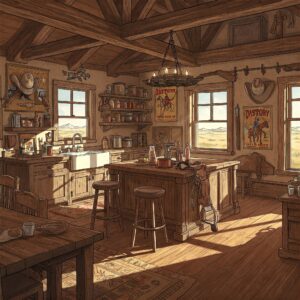
Conclusion: Embracing the Cowboy Kitchen Spirit
The cowboy kitchen tradition represents more than just cooking methods—it embodies a philosophy of resourcefulness, community, and connection to our food that remains deeply relevant today. By incorporating these techniques into your home cooking routine, you’re not just preparing meals; you’re participating in a living piece of American culinary heritage.
Whether you’re drawn to the practical benefits of one-pot cooking, the distinctive flavors of open-fire methods, or simply the satisfaction of creating hearty, delicious food with simple ingredients, the cowboy kitchen approach offers something valuable for every home cook. The techniques developed through necessity on the western frontier have proven their worth through generations and continue to provide delicious results in modern kitchens.
As you experiment with Dutch ovens, cast iron skillets, and traditional recipes, you’ll discover not just new flavors but a deeper appreciation for the ingenuity of those who came before us. In our complicated modern world, there’s something profoundly satisfying about connecting with these straightforward, time-tested methods.
So stoke your fire, season your cast iron, and embrace the spirit of the cowboy kitchen. Your taste buds—and your guests—will thank you for the authentic flavors and hearty satisfaction that only these traditional techniques can provide.
More FAQ
❓ What is a cowboy kitchen used for?
✅ A cowboy kitchen is a portable outdoor cooking setup used for camping, tailgating, or ranch-style events. It typically includes a grill, prep space, and storage for utensils and ingredients…
❓ How do you build a DIY cowboy kitchen?
✅ To build a DIY cowboy kitchen, use a foldable table, propane stove, and modular crates for storage. Add hooks for utensils and a water jug for easy cleanup…
❓ What features should a cowboy kitchen have?
✅ A good cowboy kitchen should include a cooking surface, food prep area, storage compartments, and durable materials that withstand outdoor use. Portability and easy setup are also essential…
❓ Can a cowboy kitchen fit in a truck bed?
✅ Yes, many cowboy kitchens are designed to fit inside a truck bed. They fold or slide out, offering compact storage and a full cooking station on the go…
❓ Where can I buy a ready-made cowboy kitchen?
✅ You can find ready-made cowboy kitchens online at outdoor gear stores, camping supply retailers, or marketplaces like Amazon and Etsy. Many offer customizable designs for specific vehicles or needs…
Recommended for You:
- 10 Best Dishes at Alfredos Italian Kitchen That Will Transport You to Italy in 2025
- Roman Shades for Kitchen: 15 Gorgeous Ideas to Instantly Elevate Your Space
- Lolas Kitchen: 10 Mouthwatering Secrets Behind America’s Favorite Hidden Gem
Disclaimer: This article contains affiliate links. If you purchase products through these links, we may earn a small commission at no additional cost to you.
